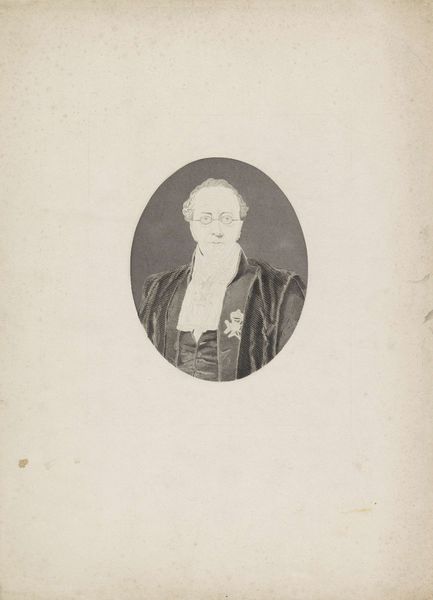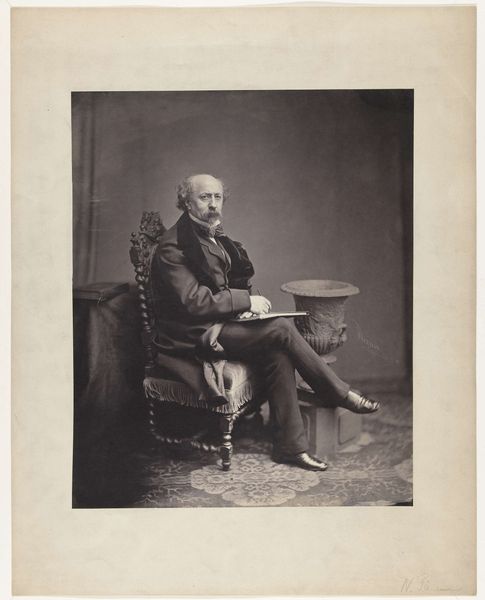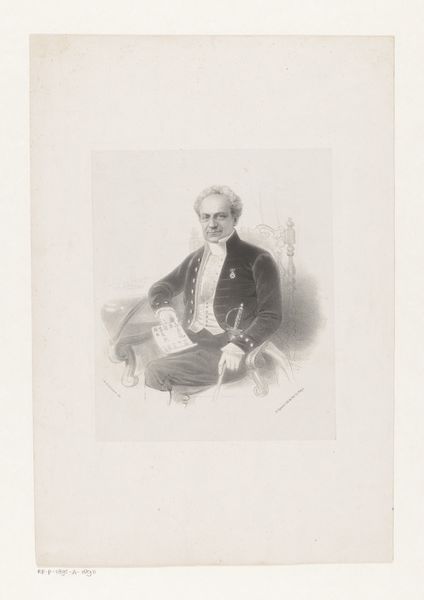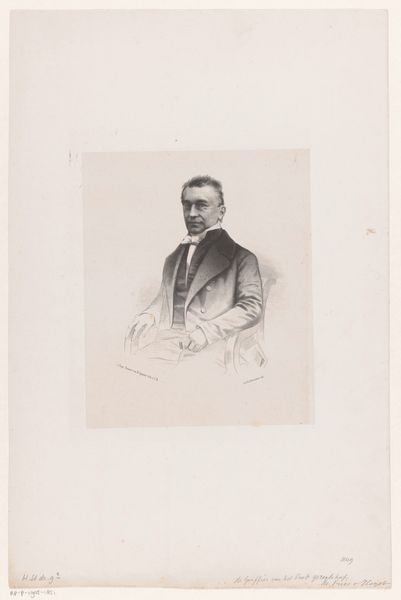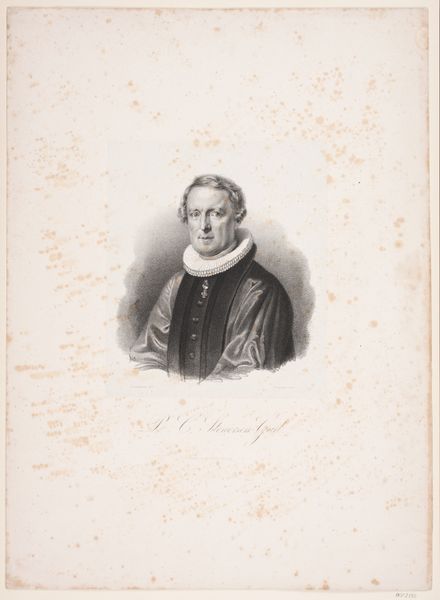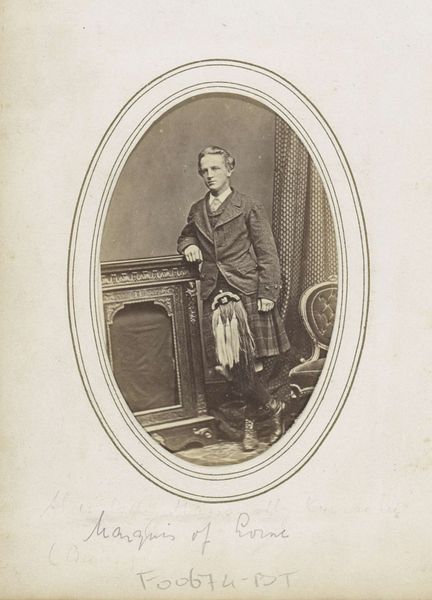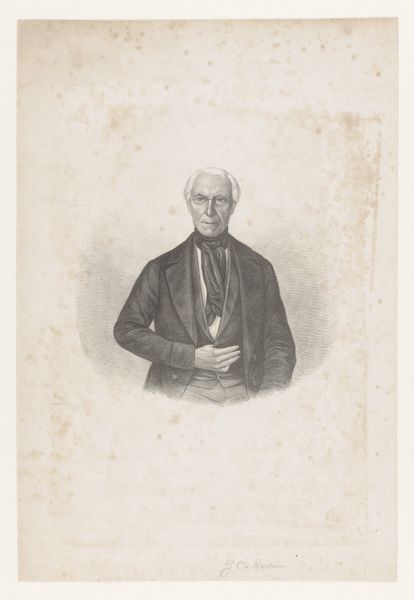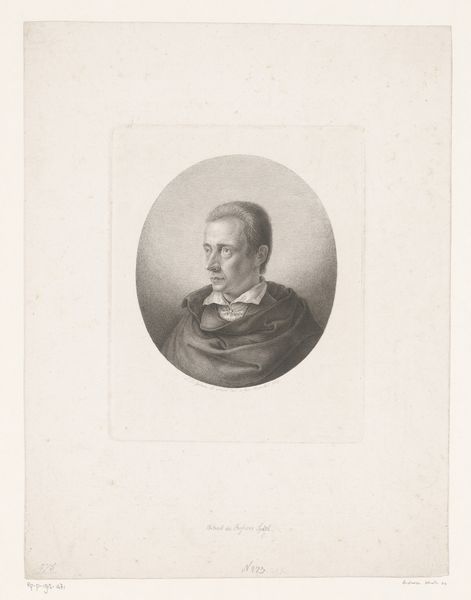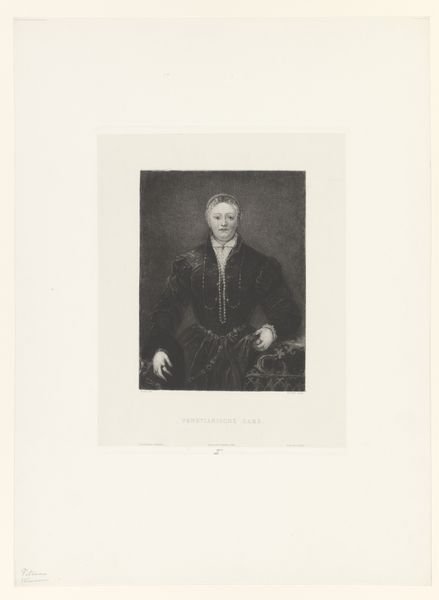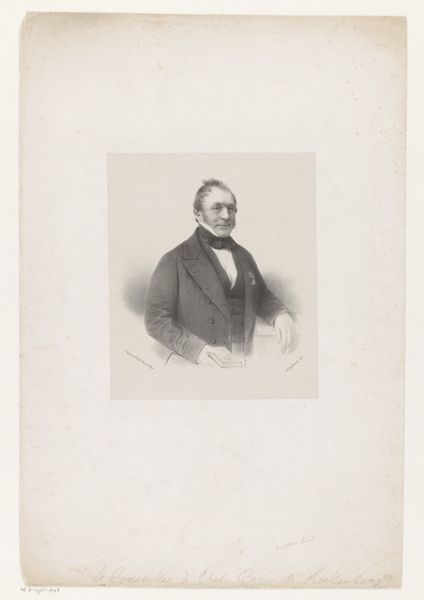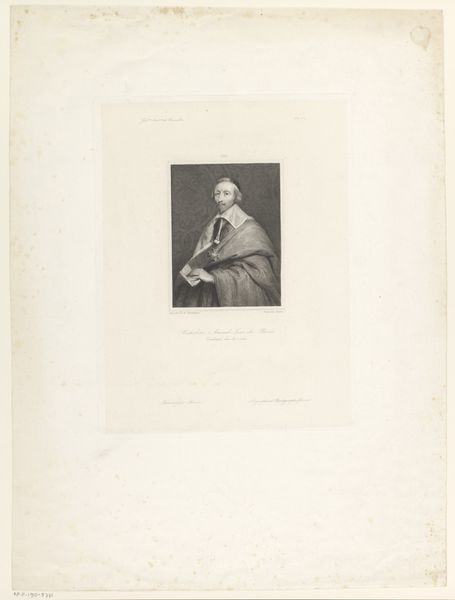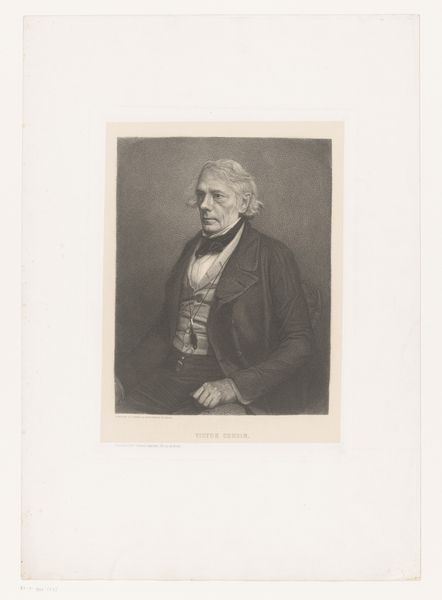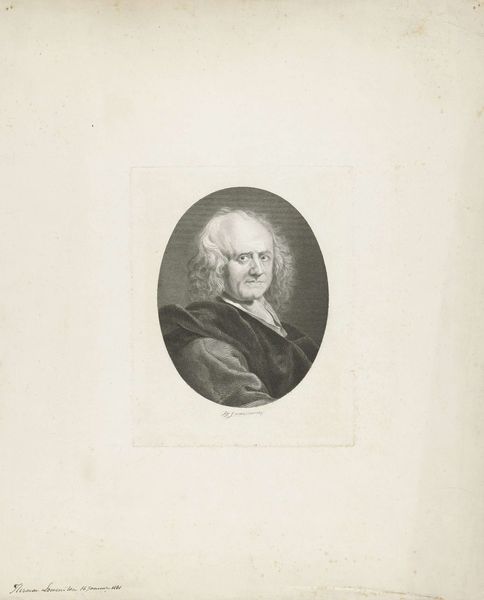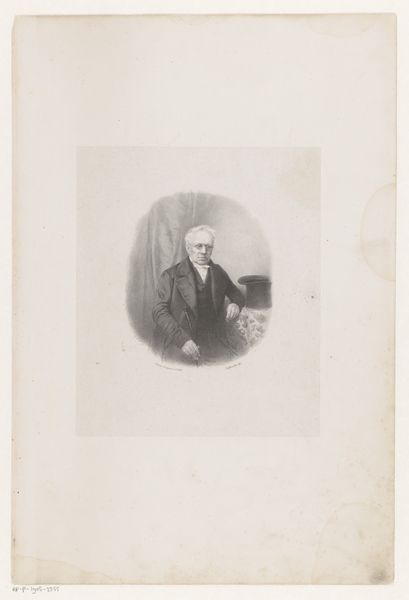
print, graphite
#
portrait
#
16_19th-century
# print
#
graphite
#
realism
Dimensions: height 560 mm, width 407 mm
Copyright: Rijks Museum: Open Domain
This is a portrait of Steven Adriaan Buddingh, made by Johan Hendrik Hoffmeister using lithography. Lithography is a printmaking process that relies on the chemical repulsion between oil and water. The artist draws an image on a flat stone or metal plate with a greasy substance. The stone is then treated with acid, which fixes the drawing. When the surface is dampened and inked, the ink adheres only to the greasy areas, allowing the image to be printed. Look closely, and you'll see the soft, velvety texture that is so characteristic of lithographs. This printmaking technique allowed for the relatively quick and inexpensive reproduction of images, making art more accessible to a wider audience, and transforming the ways images could circulate in society. By focusing on these processes, we see how printmaking democratized portraiture, previously reserved for the wealthy, and offered new ways to represent and disseminate images of individuals like Steven Adriaan Buddingh.
Comments
No comments
Be the first to comment and join the conversation on the ultimate creative platform.
